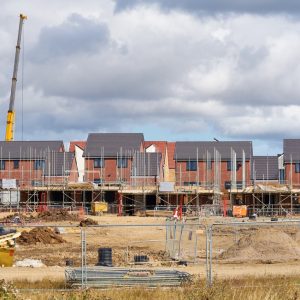
A Shawbrook poll of 513 property developers found that 34 per cent grew their business in the last year while rising costs led 96 per cent to make changes to their business strategy.
Some 40 per cent changed the building materials they used, which was the most popular adjustment, while 39 per cent have built or are planning to build different types of properties.
A further 29 per cent diversified their portfolio, 29 per cent made efficiencies and 28 per cent reduced their overheads. The changing market was also a factor, as 27 per cent made adjustments to meet demand.
Regulations had an impact on the decisions of developers, with 27 per cent making changes to improve the EPC rating of their portfolio and 24 per cent shifting to meet government regulations.
The most popular motivation to make these changes was to increase profit margins, as cited by 36 per cent of developers. Some 29 per cent were aiming to be more sustainable.
Pressures were felt across the market as just one per cent of developers polled said they experienced no concerns or challenges in the last 12 months.
Labour costs a main concern
When asked about the biggest challenges they faced, 38 per cent of developers said increasing labour costs while 36 per cent pointed to the cost of materials.
The rise in expenditure was most notable among developers with residential housing projects, with 44 per cent naming costs as a reason for the change in business strategy.
This compared to 41 per cent of developers with build-to-let developments, 41 per cent in the industrial space, 39 per cent in the commercial market and 38 per cent in semi-commercial. Some 37 per cent of developers with student residences cited rising costs as a challenge, as did 30 per cent of those with later life residential projects.
Other challenges included rising mortgage rates, as cited by 29 per cent of respondents and falling house prices, also named by 29 per cent of respondents.
ESG and sustainability commitments were influencing the plans of 28 per cent of developers, while obtaining planning permission was a factor for 27 per cent.
Some 26 per cent said the difficulties around access to funding and investment, while 24 per cent said sourcing labour. Some 24 per cent of respondents said new regulations were impacting their plans.
Adapting to changes
Terry Woodley, MD of development finance at Shawbrook, added: “Property developers are displaying resilience as they adapt to new directions in construction.
“Only four per cent of developers are not planning to make any strategic adjustments, highlighting just how crucial the need for adaptability is going to be over the next 12 months. What will be most interesting, however, is the routes developers choose to go down in order to make their plans profitable.”
He added: “For instance, they are incorporating a mix of residential, commercial, and recreational areas into single projects. This strategy diversifies income sources and reduces risks tied to any one sector. The popularity of build-to-rent, retirement living, and houses with multiple occupants (HMOs) is also on the rise.
“A key factor for developers is finding a funding partner that can stay committed throughout the entire process, offering expertise and flexibility from planning to execution.”














